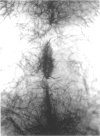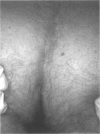Abstract
BACKGROUND: Pilonidal disease is common. Excessive hair growth in the natal cleft is thought to be a factor in initiating these sinuses. It is chronic and intermittent in nature and treatment can be difficult. Hair removal by shaving or use of creams is often advised as a compliment to surgical treatments. However, access to the natal cleft can be difficult. Laser removal of hair in the natal cleft is considered as an aid to healing the pilonidal sinus. PATIENTS AND METHODS: Over a 5-year period, 14 patients with recurrent pilonidal disease were treated in our unit with laser depilation. They were all contacted by postal questionnaire, and those with ongoing disease were asked to return to the clinic for evaluation and possible further treatment. RESULTS: All patients returned the postal questionnaire. Of the 14 patients, 4 had on-going disease and received further depilation with the Alexandrite laser. All are now healed with no reported complications. All patients found the procedure painful and received local anaesthetic. CONCLUSIONS: Laser depilation in the natal cleft is by no means a cure for pilonidal disease. Removal of hair by this method represents an alternative and effective method of hair removal and, although long lasting, is only temporary. However, it allows the sinuses to heal rapidly. It is relatively safe, and simple to teach, with few complications. It should thus be considered as an aid to healing the problem pilonidal sinus.
Full text
PDF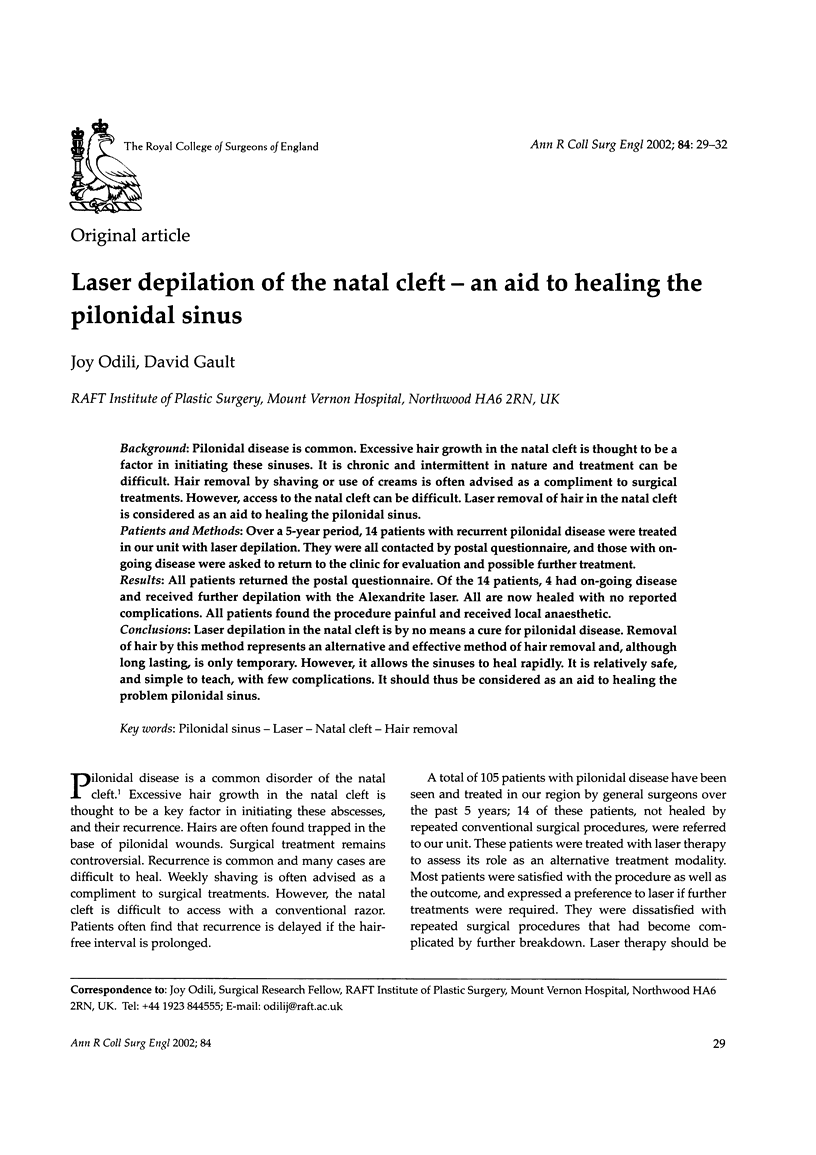
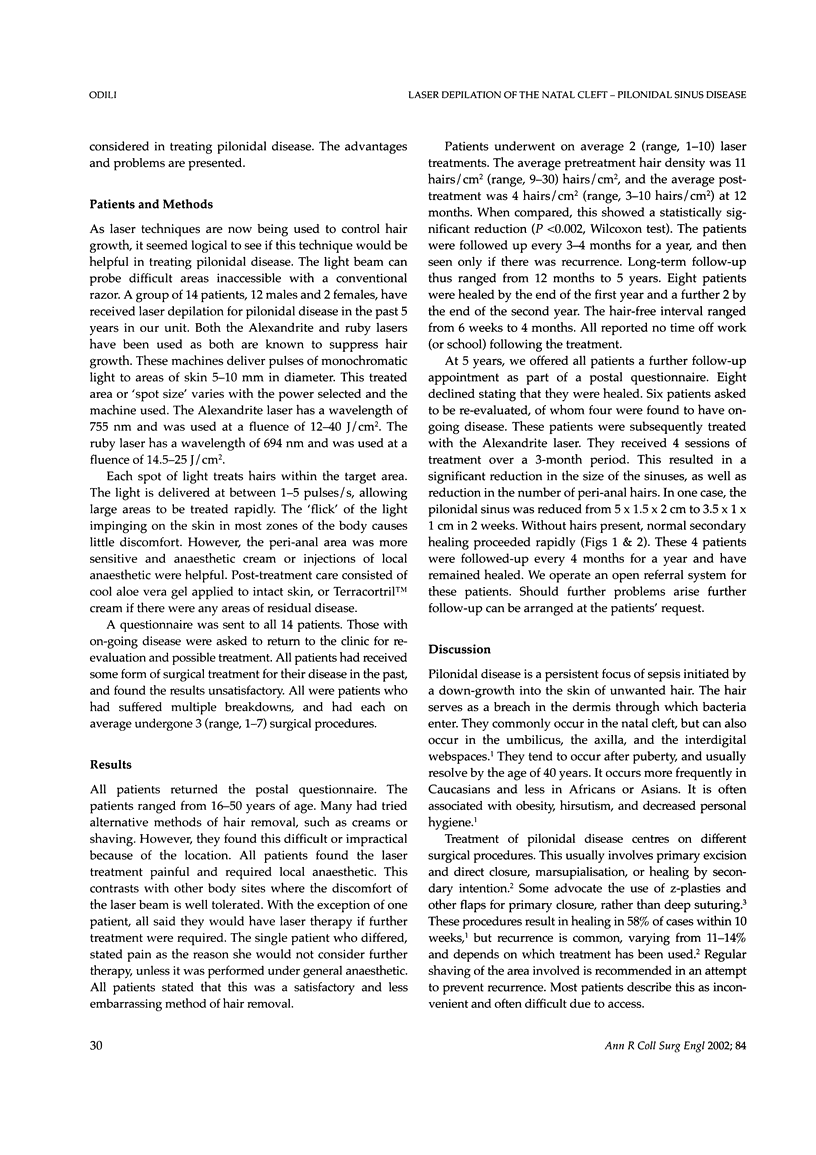
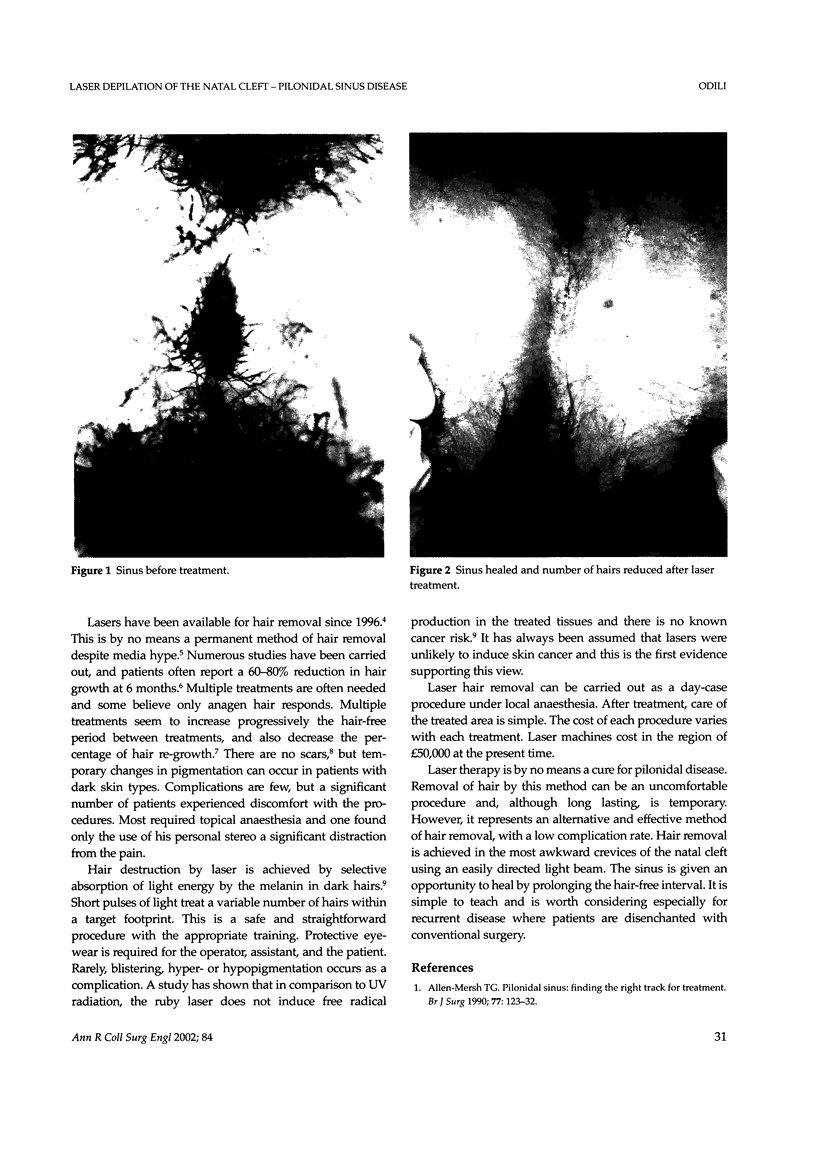
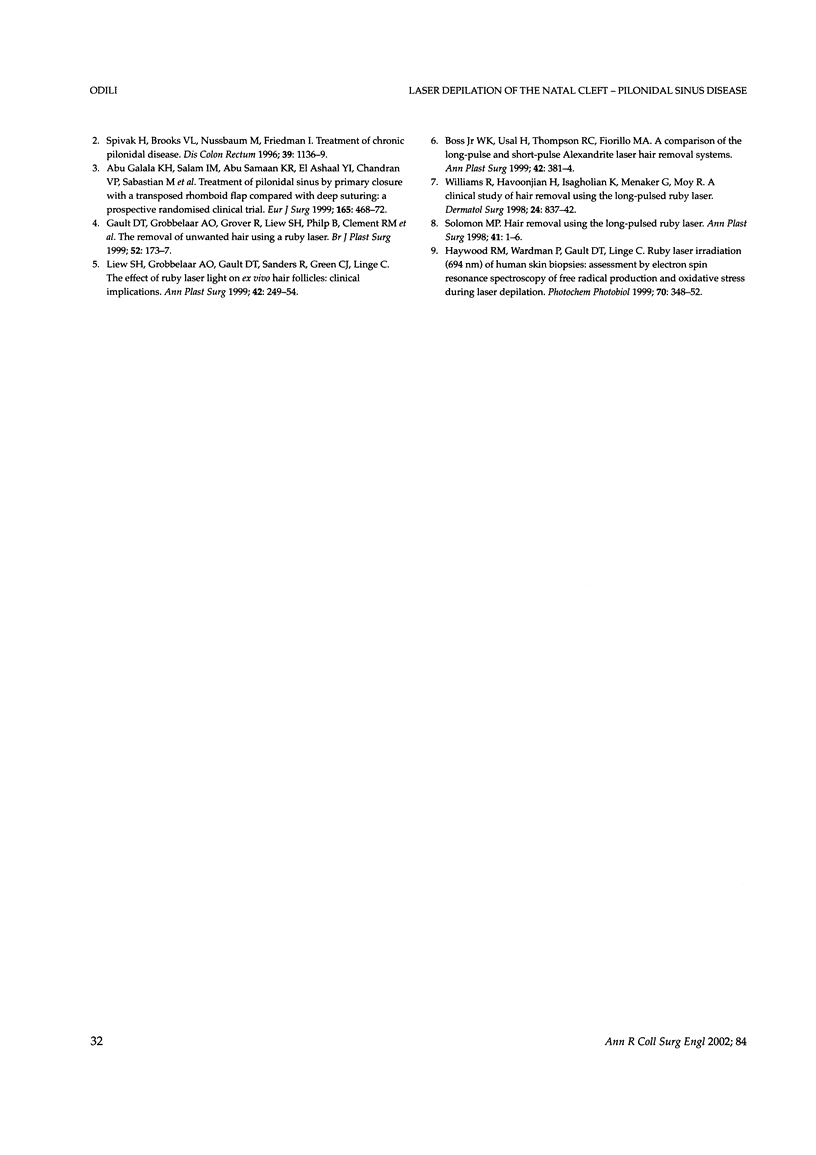
Images in this article
Selected References
These references are in PubMed. This may not be the complete list of references from this article.
- Abu Galala K. H., Salam I. M., Abu Samaan K. R., El Ashaal Y. I., Chandran V. P., Sabastian M., Sim A. J. Treatment of pilonidal sinus by primary closure with a transposed rhomboid flap compared with deep suturing: a prospective randomised clinical trial. Eur J Surg. 1999 May;165(5):468–472. doi: 10.1080/110241599750006721. [DOI] [PubMed] [Google Scholar]
- Allen-Mersh T. G. Pilonidal sinus: finding the right track for treatment. Br J Surg. 1990 Feb;77(2):123–132. doi: 10.1002/bjs.1800770203. [DOI] [PubMed] [Google Scholar]
- Boss W. K., Jr, Usal H., Thompson R. C., Fiorillo M. A. A comparison of the long-pulse and short-pulse Alexandrite laser hair removal systems. Ann Plast Surg. 1999 Apr;42(4):381–384. doi: 10.1097/00000637-199904000-00006. [DOI] [PubMed] [Google Scholar]
- Gault D. T., Grobbelaar A. O., Grover R., Liew S. H., Philp B., Clement R. M., Kiernan M. N. The removal of unwanted hair using a ruby laser. Br J Plast Surg. 1999 Apr;52(3):173–177. doi: 10.1054/bjps.1999.3083. [DOI] [PubMed] [Google Scholar]
- Haywood R. M., Wardman P., Gault D. T., Linge C. Ruby laser irradiation (694 nm) of human skin biopsies: assessment by electron spin resonance spectroscopy of free radical production and oxidative stress during laser depilation. Photochem Photobiol. 1999 Sep;70(3):348–352. [PubMed] [Google Scholar]
- Liew S. H., Grobbelaar A. O., Gault D. T., Sanders R., Green C. J., Linge C. The effect of ruby laser light on ex vivo hair follicles: clinical implications. Ann Plast Surg. 1999 Mar;42(3):249–254. doi: 10.1097/00000637-199903000-00004. [DOI] [PubMed] [Google Scholar]
- Solomon M. P. Hair removal using the long-pulsed ruby laser. Ann Plast Surg. 1998 Jul;41(1):1–6. doi: 10.1097/00000637-199807000-00001. [DOI] [PubMed] [Google Scholar]
- Spivak H., Brooks V. L., Nussbaum M., Friedman I. Treatment of chronic pilonidal disease. Dis Colon Rectum. 1996 Oct;39(10):1136–1139. doi: 10.1007/BF02081415. [DOI] [PubMed] [Google Scholar]
- Williams R., Havoonjian H., Isagholian K., Menaker G., Moy R. A clinical study of hair removal using the long-pulsed ruby laser. Dermatol Surg. 1998 Aug;24(8):837–842. doi: 10.1111/j.1524-4725.1998.tb04260.x. [DOI] [PubMed] [Google Scholar]



